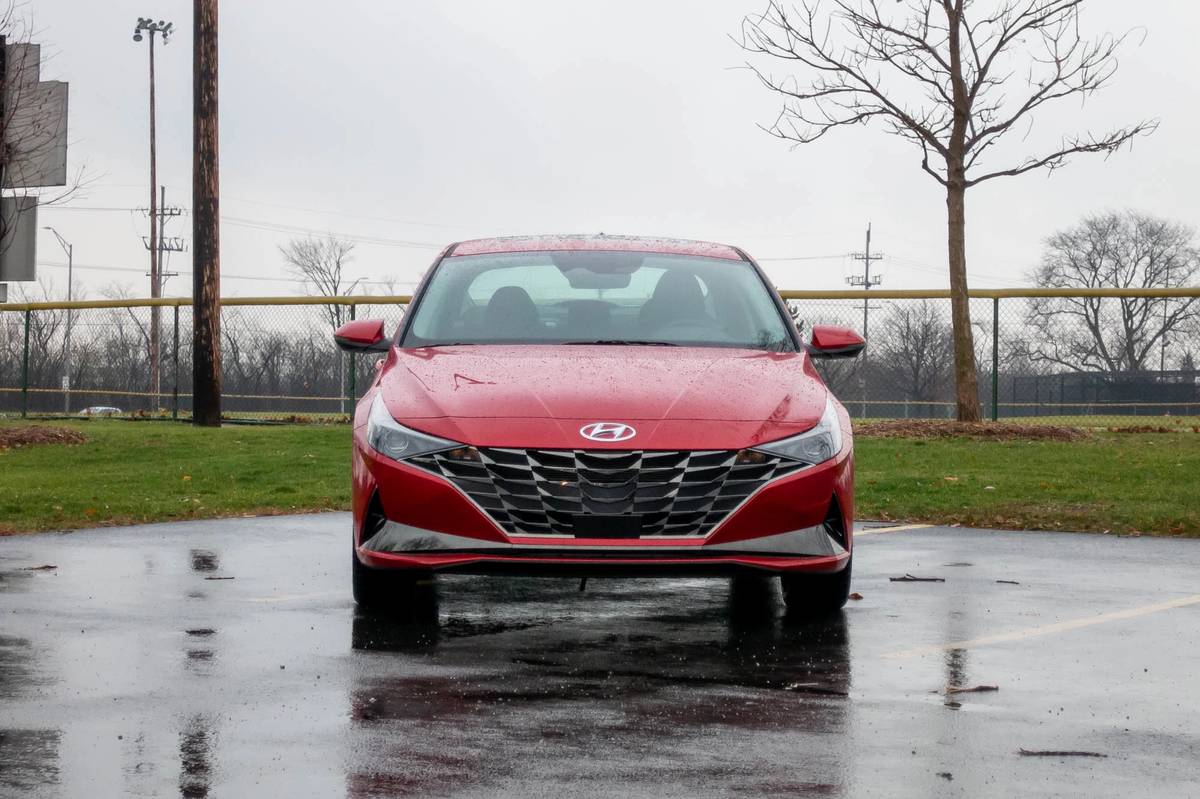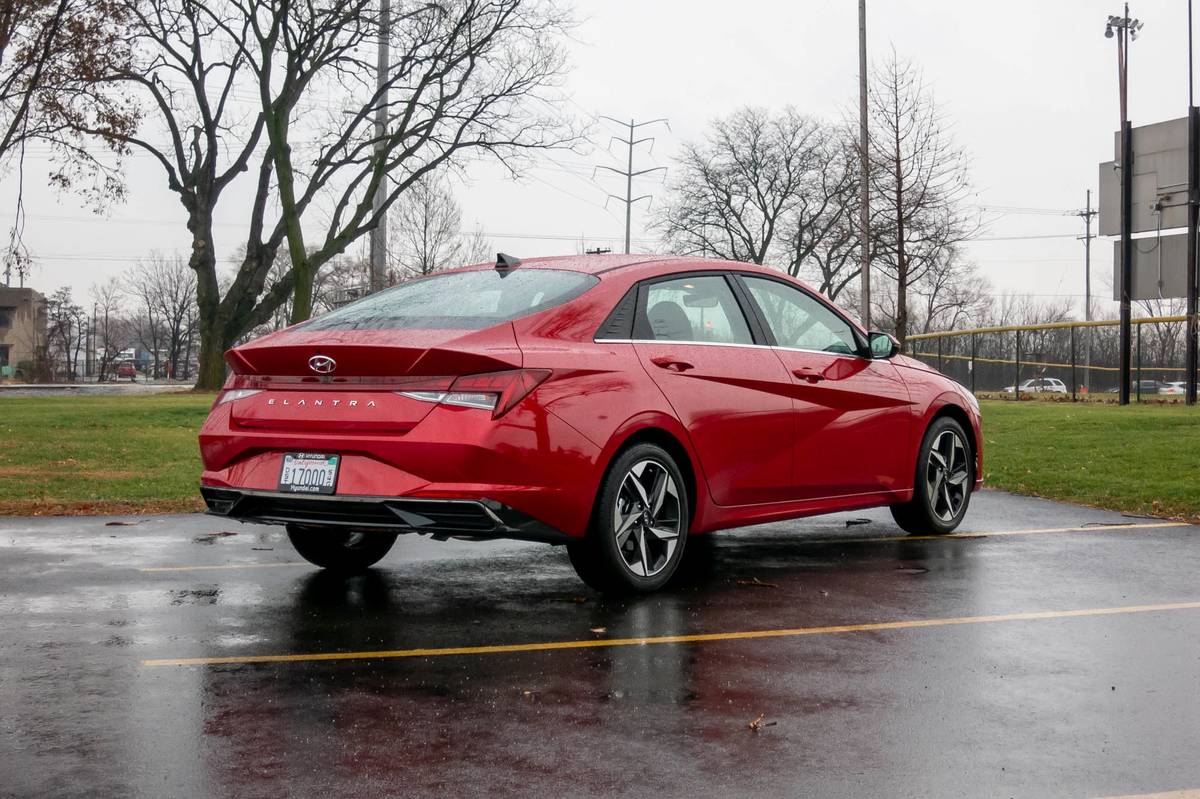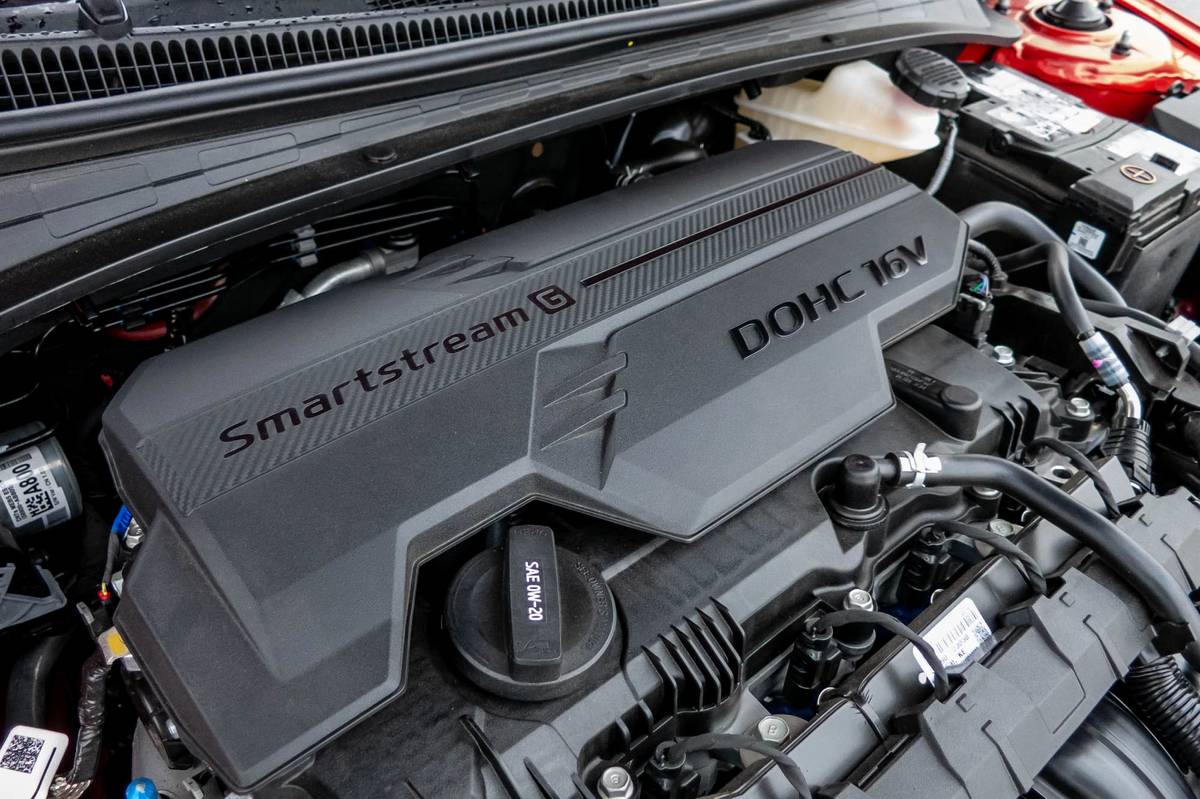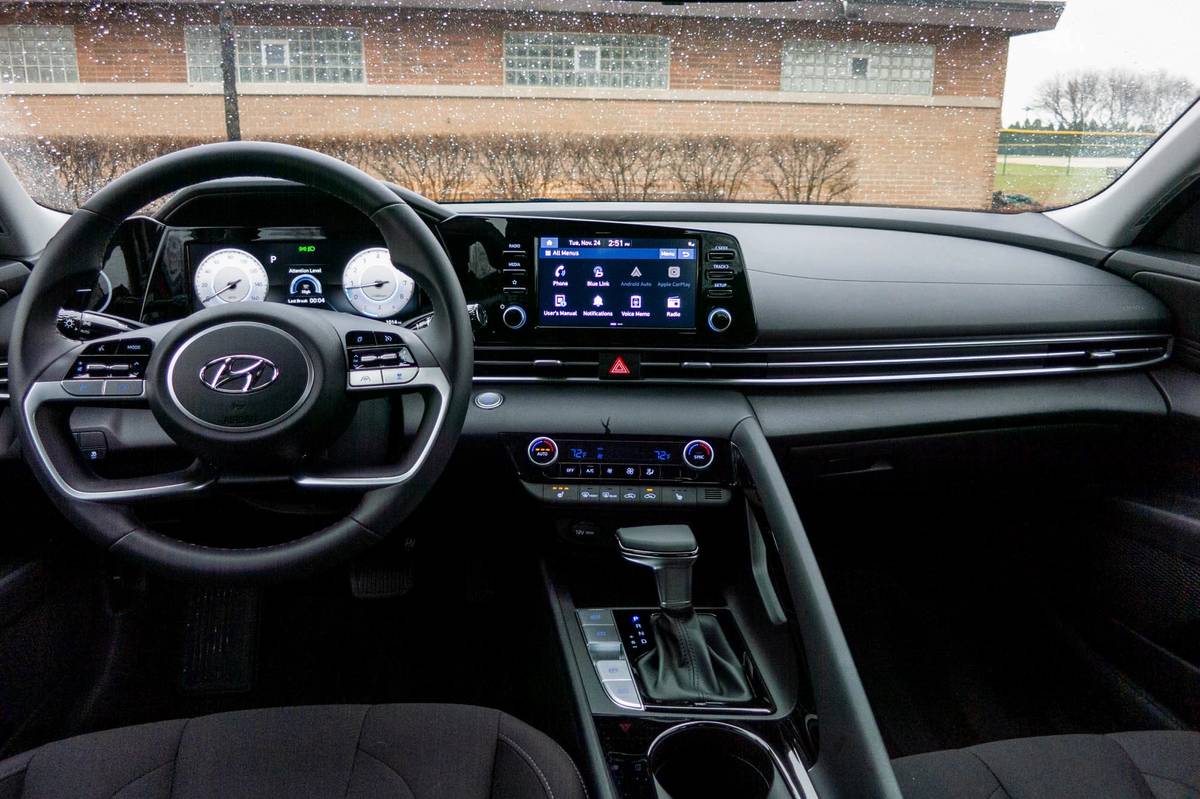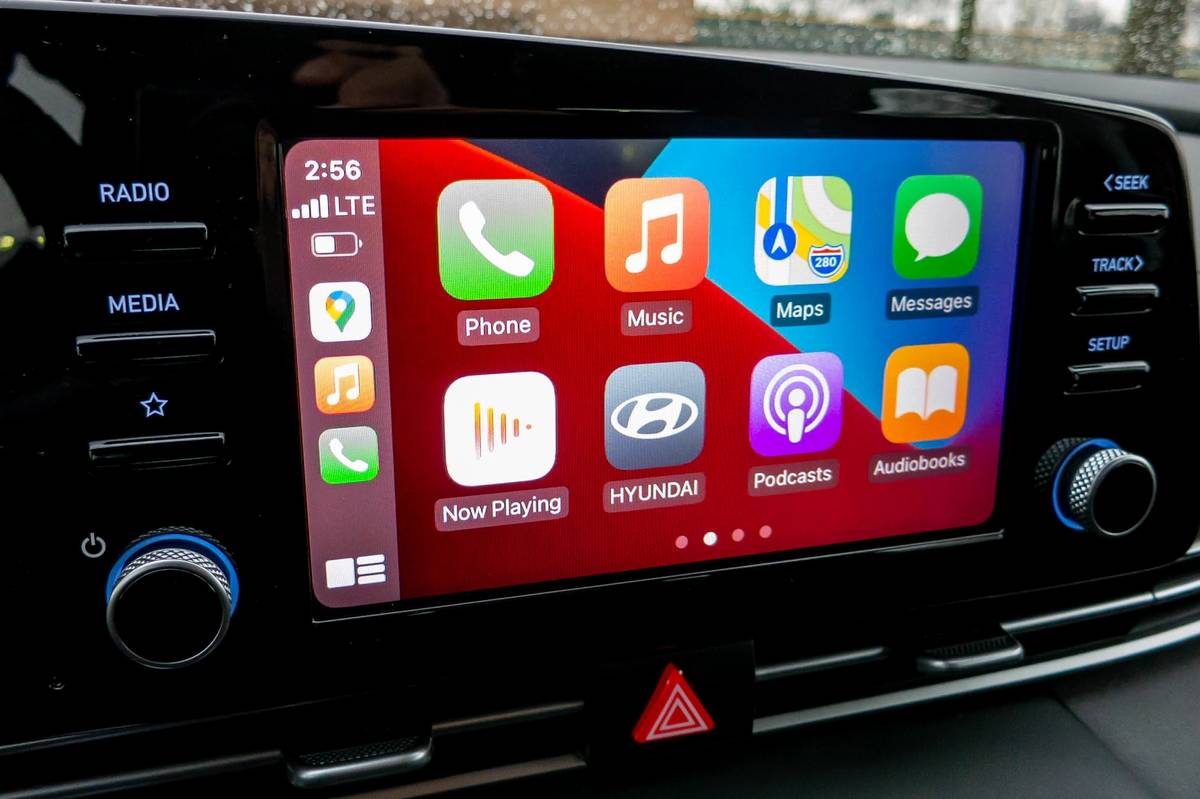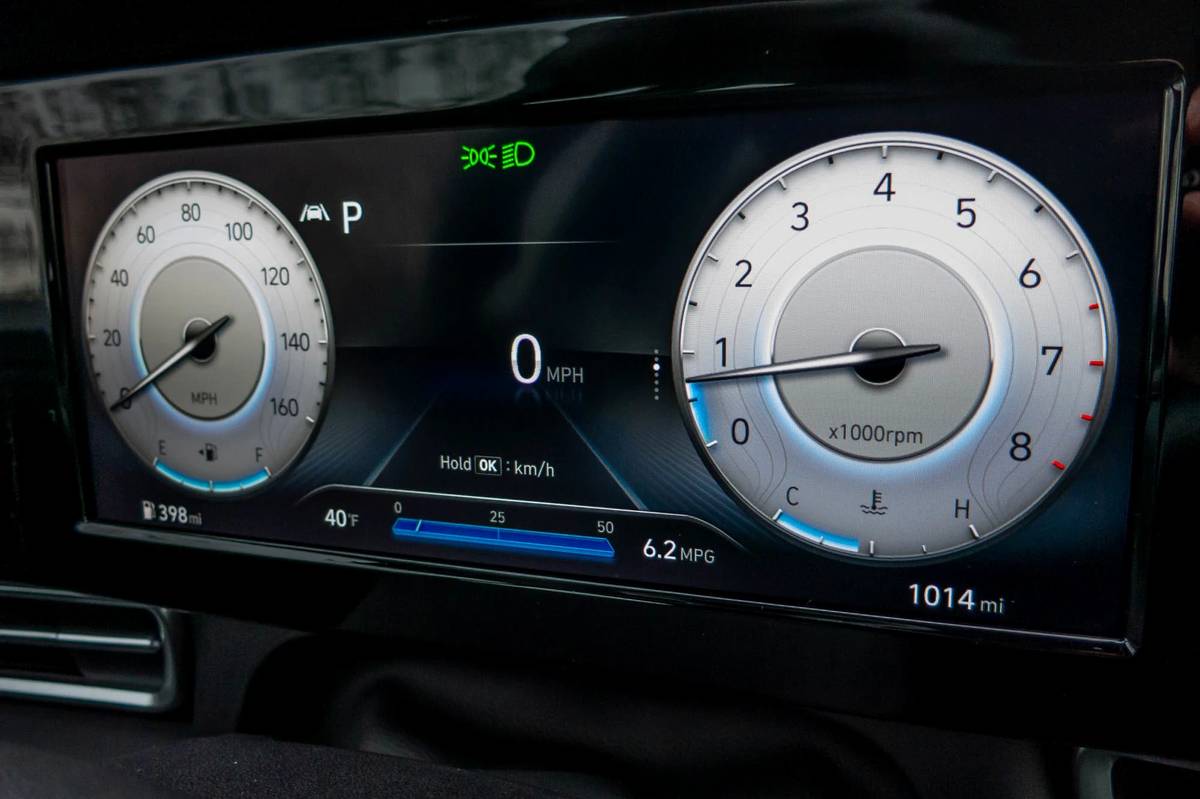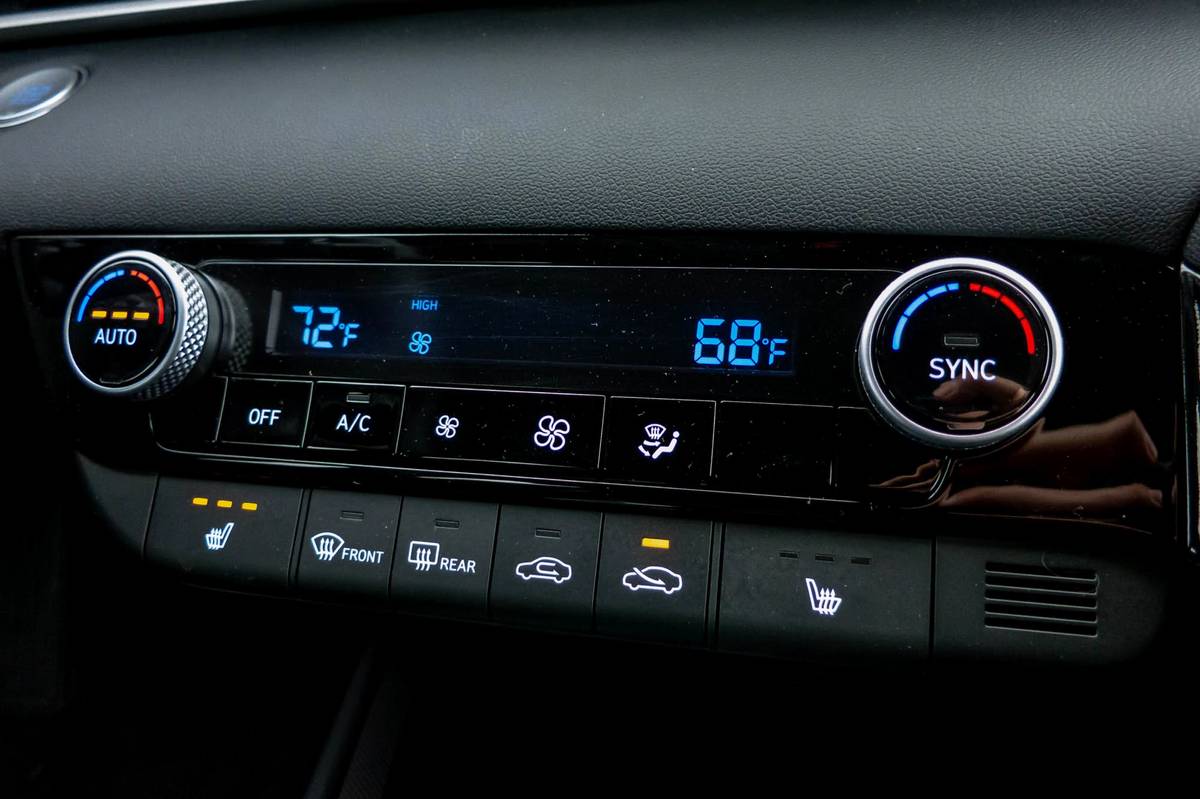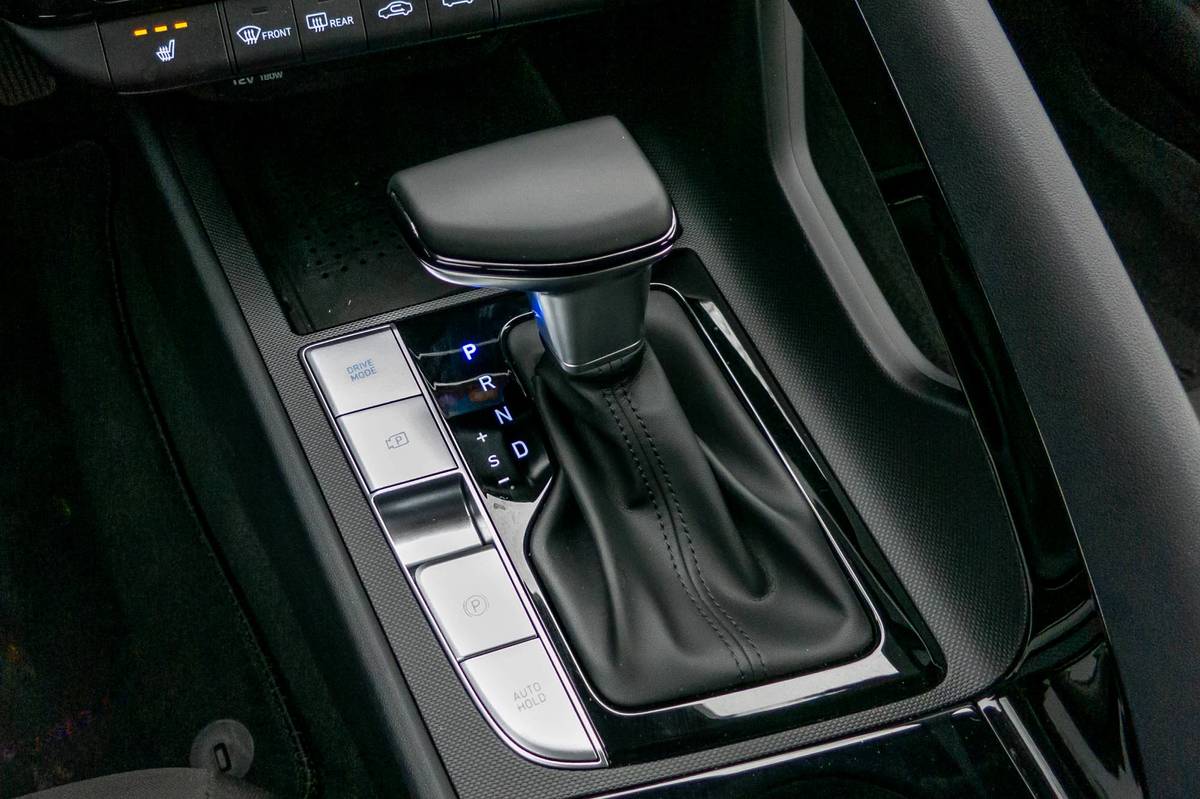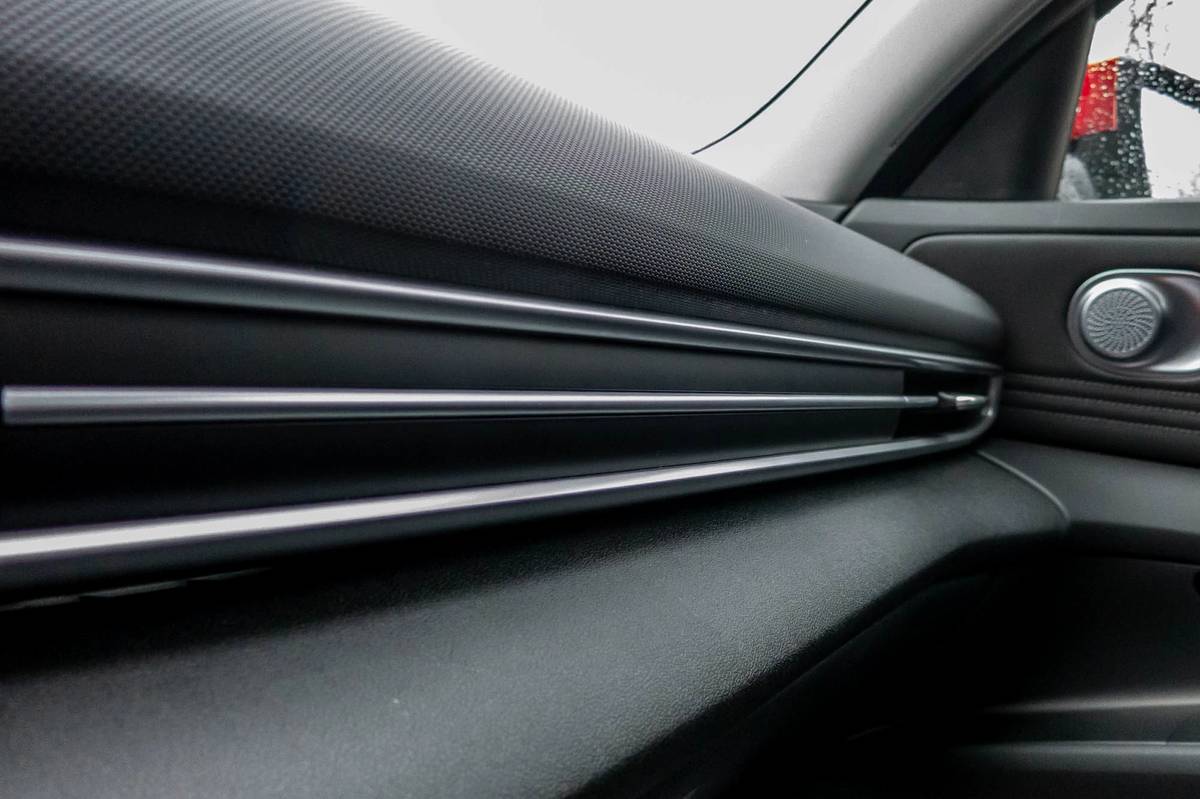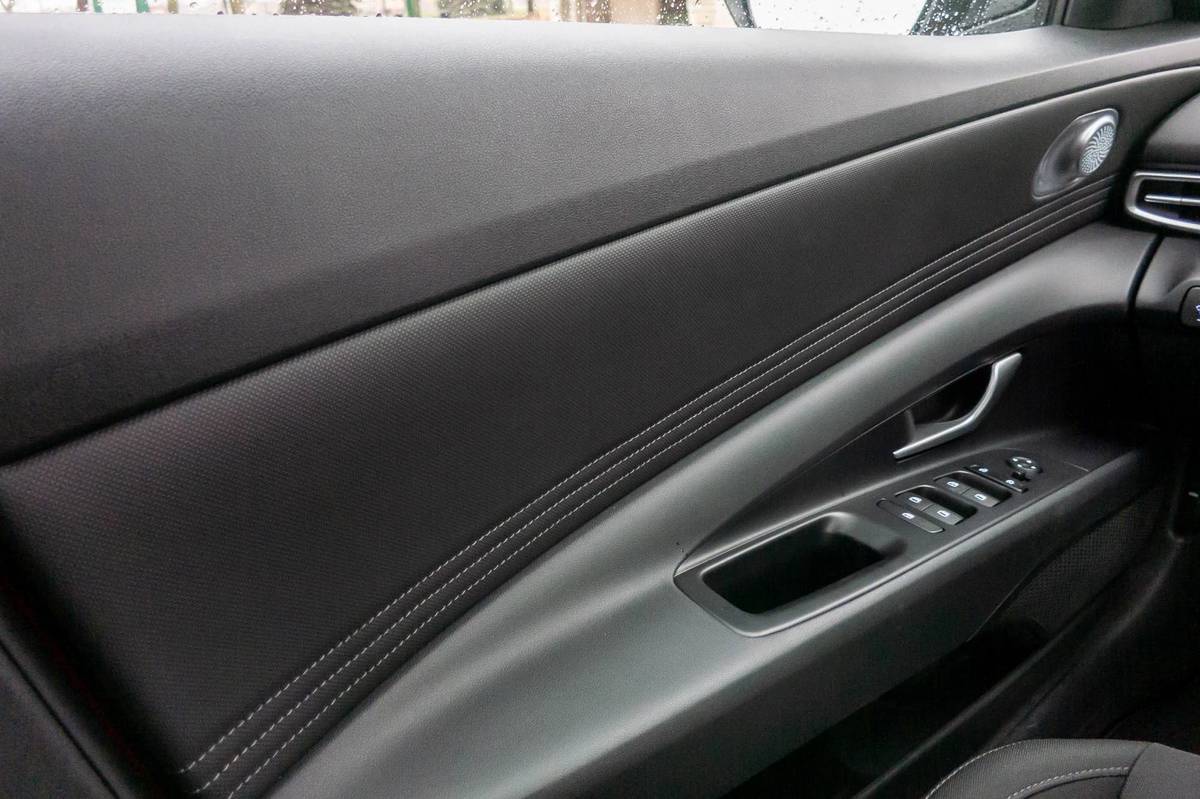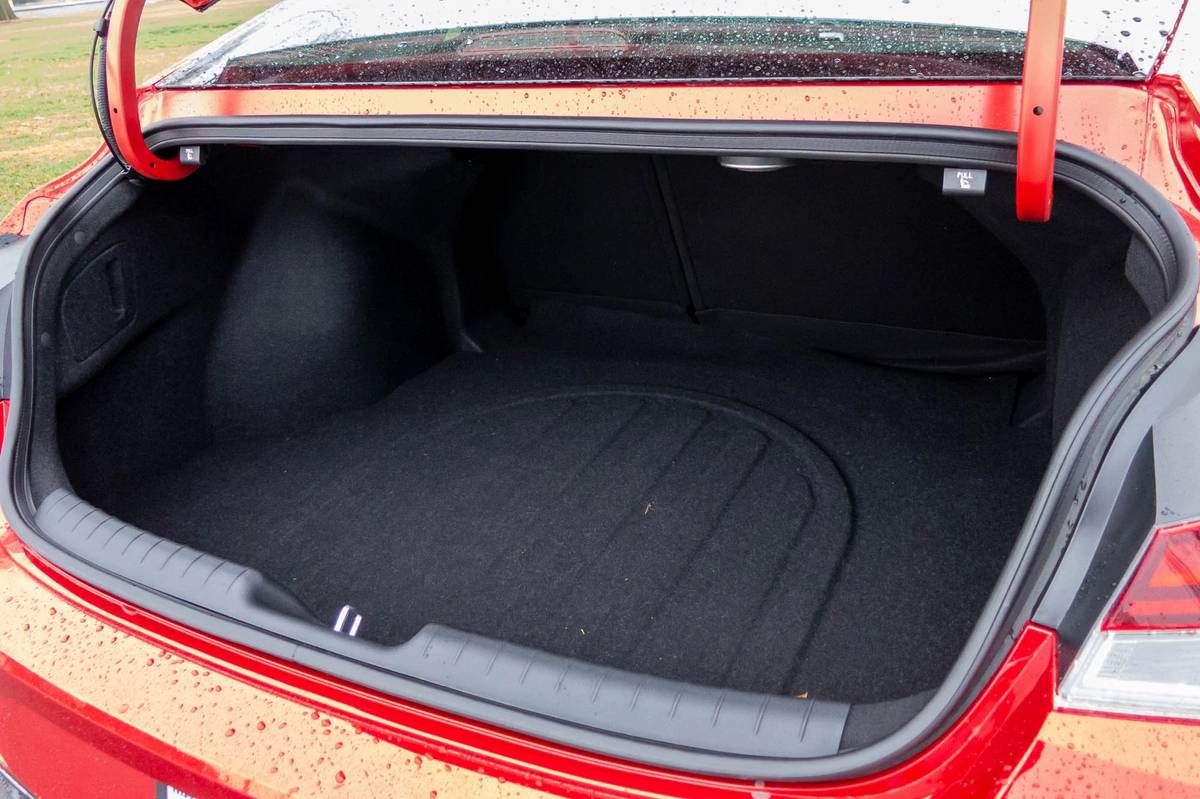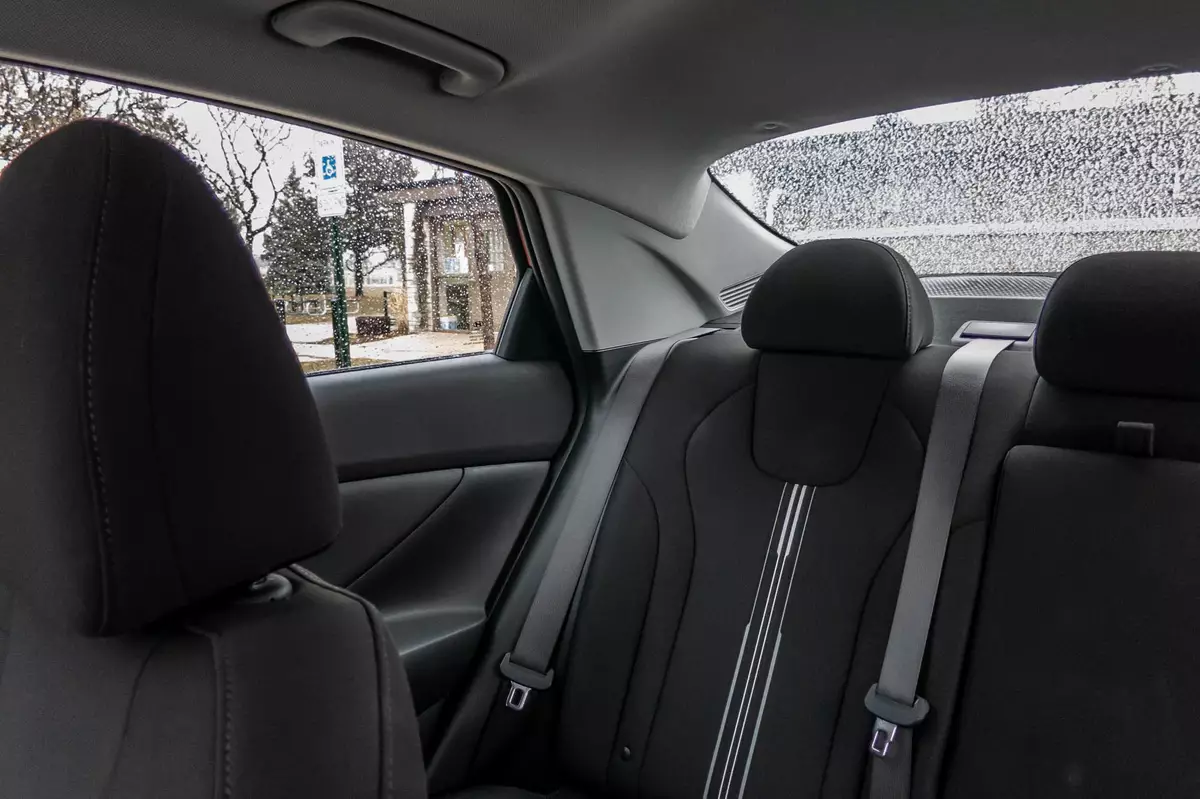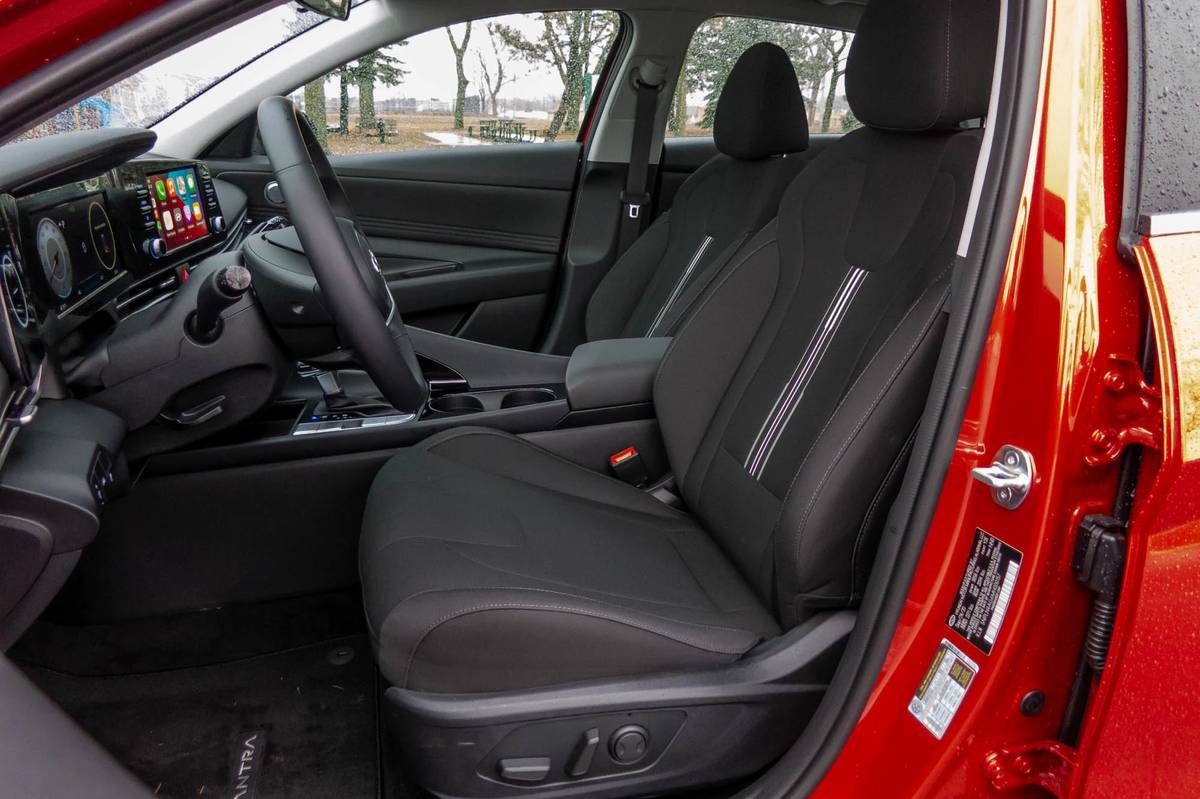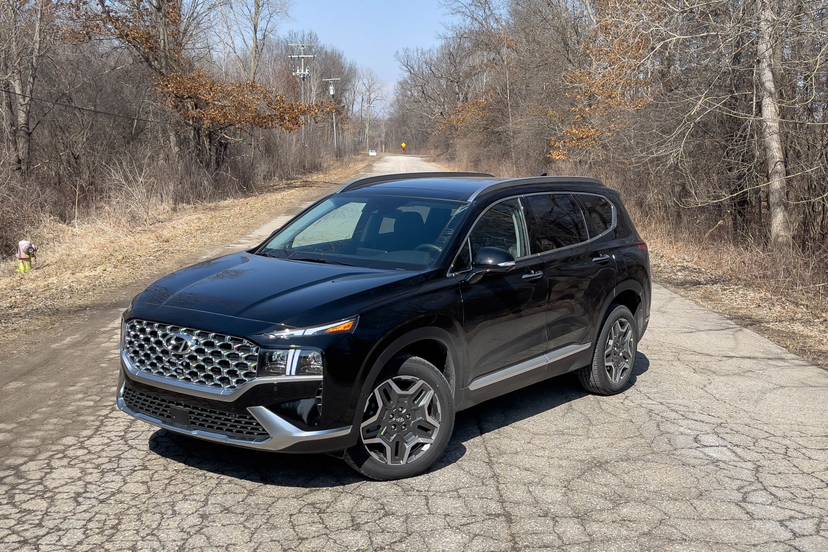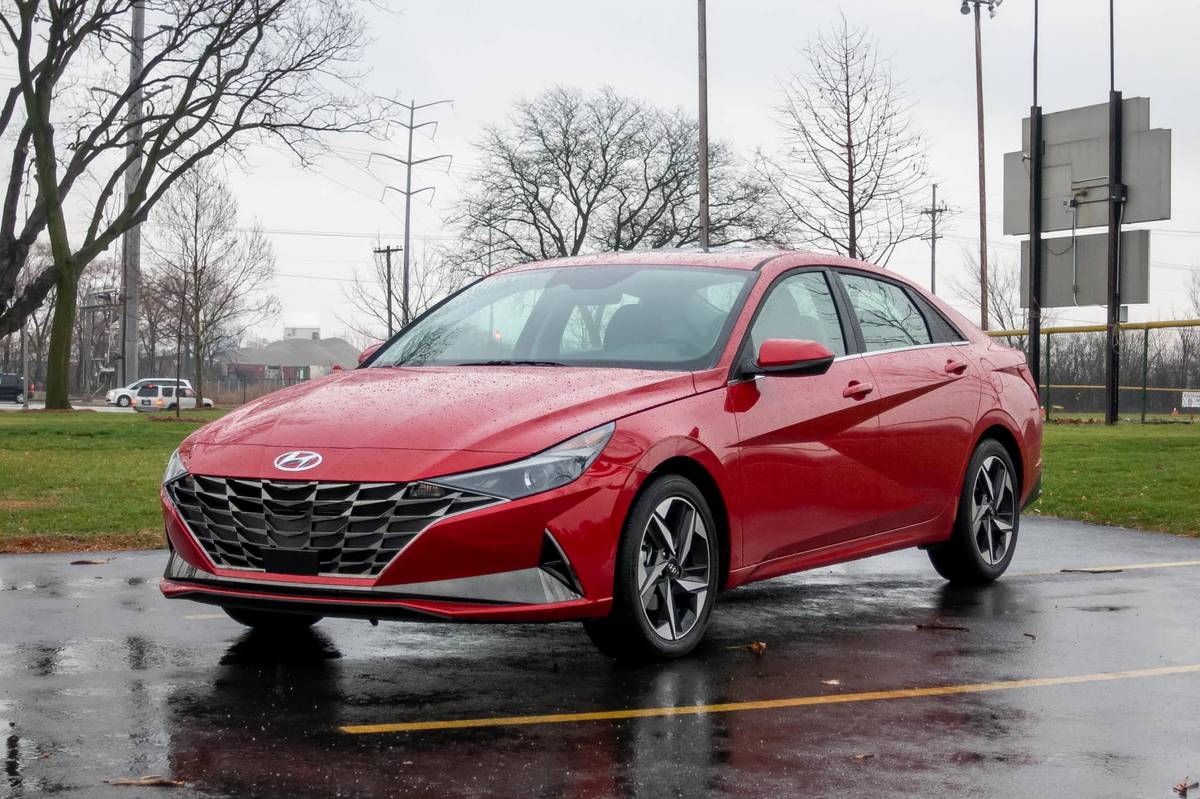
The verdict: The redesigned 2021 Hyundai Elantra compact sedan would be excellent rather than good if not for its lackluster cabin materials. If developing a car was a marathon, Hyundai didn’t run the last mile.
Versus the competition: For a mass-market compact sedan, the Elantra combines class-leading drivability with loads of user-friendly technology. Alas, its low-rent interior weighs all that down.
For 2021, the Hyundai Elantra sedan comes in SE, SEL and Limited trim levels, all with a 2.0-liter four-cylinder engine. (The Elantra GT hatchback has been discontinued.) The first-ever Elantra Hybrid, meanwhile, pairs a smaller four-cylinder with electric assist; it comes in SEL and Limited trims. Finally, the Elantra N Line has a turbocharged four-cylinder and the lineup’s only manual transmission. (Note that a higher-performance Elantra, called simply the N, without the “Line,” remains in the works as of this writing.) All other variants have an automatic, which is also available on the N Line. Stack up the whole current group, or compare the 2020 and 2021 Elantra.
Related: Redesigned 2021 Hyundai Elantra Starts at $20,645; Here’s What You Get
We evaluated an SEL over the course of a week and also took brief drives in the Limited Hybrid and a stick-shift N Line.
SE, SEL, Limited: Refined Drivability
A confounding but age-old reality in our recent comparison between the Honda Civic, Nissan Sentra and Toyota Corolla sedans was the trade-off between ride quality and handling chops. Hyundai elevates both better than any car in that trio, as well as most other compact sedans.
Despite a torsion-beam rear axle — a cost-saving setup versus the independent rear suspensions used by some rivals, including the Civic and Corolla — the Elantra rides impressively. Aside from some skittishness during mid-corner bumps, body control feels impressive for a mass-market compact sedan. Ditto for shock absorption: The suspension takes sewer covers and rutted pavement with a degree of sophistication reminiscent of a larger, or pricier, car — and that’s with our SEL model’s optional 17-inch wheels and P225/45R17 tires. With available wheel diameters ranging from 15 to 18 inches, it’s possible lesser versions of the Elantra ride even more comfortably. (All other things being equal, larger wheels generally diminish ride quality.)
Kudos, too, for the Elantra’s reflexes. Fling it into a corner and the nose pushes early, but the steering feels as quick-ratio as the Civic’s — still one of the best-handling cars in the class — with less of the outgoing Elantra’s vagueness. The wheel seldom feels twitchy on center even at higher speeds, and body roll is nicely contained through sweeping curves.
Under the hood is last year’s 2.0-liter four-cylinder engine (147 horsepower, 132 pounds-feet of torque), which runs on a more-efficient Atkinson cycle; gone is the prior generation’s Eco trim and its turbocharged 1.4-liter four-cylinder. The 2.0-liter has reasonable power past 3,000 rpm or so, and Hyundai’s continuously variable automatic transmission is a motivated partner to get you there. Revs climb energetically from a stop, and if you need more power while already in motion, the CVT kicks up engine rpm swiftly enough to mimic a downshift from a conventional automatic. The 2021 Elantra is not particularly quick, but it does a nice job with what it has to offer.
Elantra Hybrid: Even Better
The Elantra Hybrid pairs a 1.6-liter Atkinson four-cylinder with a 32-kilowatt electric motor for a total system output of 139 hp and 195 pounds-feet of torque. It’s a handy combination, particularly on the torque side, to move you out from a stop. Unlike the many hybrids that employ CVT-like power-split devices, Hyundai’s system uses a conventional stepped automatic transmission — in this case a six-speed dual-clutch unit. The stepped gears bring a welcome sensation of upshifts and downshifts, though the downshifts arrive only after a long delay or hard stab on the gas. Sport mode provides much-needed accelerator responsiveness — there’s your downshift — if you don’t mind sacrificing fuel efficiency.
That efficiency is considerable, with 50 mpg in EPA-estimated combined gas mileage (54 mpg in a higher-efficiency Elantra Hybrid Blue edition). That’s up some 40% over the Elantra’s still-impressive EPA 35 mpg combined (37 mpg for the SE trim). Both figures are competitive against respective rivals; compare Elantra Hybrid mileage or the regular Elantra’s.
The Elantra Hybrid gets an independent rear suspension versus the non-hybrid’s torsion beam, but the differences are hard to pick out. I drove the Elantra Hybrid Limited back to back with an Elantra SEL, both with 17-inch wheels, over the same route. Both cars rode similarly well — more of a feat for the SEL’s simpler hardware, perhaps, but we preach results over formula. The results speak for themselves.
Elantra N Line: A Minor Letdown
If there’s any disappointment in how the Elantra drives, it comes with the N Line. Like the Elantra Hybrid, it gets an independent rear suspension, but tuning is stiffer all around versus the regular Elantra, with a thicker front stabilizer bar, as well. It shows: Shock absorption is notably firmer — though not objectionably so, as was the case with its Elantra Sport predecessor. The steering, altered here for N Line duty, augments the regular Elantra’s quick ratio with better feedback. Whether through chassis tuning or better grip (our test car had Goodyear Eagle F1 summer tires), or a little of both, understeer feels immediately better contained.
So where’s the letdown? It’s all in the N Line’s powertrain. The N Line packs Hyundai’s turbocharged 1.6-liter four-cylinder (201 hp, 195 pounds-feet of torque), an engine we’ve seldom found responsive enough. Hyundai says peak torque comes as early as 1,500 rpm, but it’s only after notable turbo lag. The lag diminishes if you keep engine revs north of 4,000 rpm or so, which requires frequent work with the stick-shift N Line’s longish throws and muddy gates. Even then, the N Line never feels particularly quick. The optional automatic transmission is a seven-speed dual-clutch unit, so it might alter some of the power delivery. Alas, we didn’t evaluate it.
Tech Features
SE, SEL and N Line models have two USB ports, HD radio and an 8-inch touchscreen with adjacent physical controls, including the must-have volume and tuning knobs. Impressively, the standard Apple CarPlay and Android Auto both have wireless integration. Wireless phone charging — critical if you really want to go cord-free, as wireless Apple CarPlay and Android Auto can drain your phone’s battery fast — is optional, as are all-digital gauges.
The Limited trim comes with wireless charging and swaps the 8-inch screen for a 10.25-inch touchscreen. It’s a slick, high-resolution display, but it introduces some annoyances. Gone is the tuning knob, and both Apple CarPlay and Android Auto revert to a wired setup. What’s more, the larger display has a widescreen ratio that’s starved for height, so items like the backup camera image appear only on part of the screen. The navigation map and Apple CarPlay leverage the entire display, but I didn’t test Android Auto (I’m an iPhone user). Cars.com staffers with Android devices have observed display limitations in other Hyundai models with the automaker’s 10.25-inch display. See for yourself on a test drive.
The Fatal Flaw?
For all the Elantra’s strengths, the obvious flaw comes inside. It’s not space: The low center console affords a wide berth for the driver, and backseat knee clearance should suit adult passengers. Our independent accounting of cargo space found 19 cubic feet in the Elantra’s trunk, within 1 cubic foot of our accounting in the Civic, Corolla and Sentra.
Hyundai’s problem is materials quality. Even in the Limited trim, the upper doors, where your arms and elbows might rest, are all cheap hard plastic, as are most areas your knees touch. Things decline even further in the backseat, where the dollar-store treatment extends to the door armrests. The glove box opens with an undamped clatter; the headliner is mouse fur.
All of that falls in line with the prior-generation Elantra, no standout for cabin materials itself. But if you haven’t been in other compact cars, you’re missing out. The Civic and Impreza have a proper woven headliner. The Sentra offers soft-touch materials where your knees land, and almost all rivals have soft-touch door materials up front, especially in higher trim levels. The Mazda3 keeps it classy front and rear.
There’s potential to right the ship immediately. All major controls feel uniformly meticulous, unlike rivals like the Corolla. All Hyundai would have to do is swap in better materials immediately for a modest cost per car. Of course, the bean counters will multiply that by the hundreds of thousands of cars the automaker hopes to sell. You know how that ends.
Features and Value
As of this writing, the Insurance Institute for Highway Safety has yet to publish crash-test results for the 2021 Elantra, but once the agency does, those results will appear here. Standard safety and driver-assist features include automatic emergency braking with pedestrian detection, a blind spot warning system and lane-centering steering.
The Elantra SE starts just under $21,000 (all prices include destination). That’s roughly competitive with rivals’ base models, most of which have standard automatic transmissions, as well. Standard features include 15-inch alloy wheels, the 8-inch touchscreen with wireless phone integration and the aforementioned safety tech. Finding an SE might be hard, however: As of this writing, just 12% of new 2021 Elantra sedans on Cars.com are SE models, and that’s with the Elantra Hybrid and N Line not yet on sale. Their eventual arrival will consign the SE to an even smaller slice of the pie.
The vast majority of current inventory is the next-up Elantra SEL (about $22,000), which adds larger wheels, dual-zone automatic climate control and keyless access with push-button start. Add options or climb the trim levels, and you can get leather upholstery, a power driver’s seat with memory, heated and ventilated front seats, the larger touchscreen, Bose premium audio, adaptive cruise control and Highway Driving Assist. (HDA augments Hyundai’s standard lane-centering, called Lane Following Assist, with additional capabilities on designated highways. Read more about the differences.)
The N Line runs about $25,000, while the well-equipped Limited (around $26,500) doesn’t have any factory options. The Elantra Hybrid, meanwhile, exacts a $2,650 premium for its SEL and Limited trims versus the same non-hybrid examples. As such, expect an Elantra Hybrid Limited to set you back about $29,000 — likely the highest sticker price most shoppers will see on any Elantra. That’s still a decent value, especially considering Hyundai’s impressive warranty and three years’ free maintenance.
Value might drive many shoppers toward the Elantra, and excellent drivability should justify consideration even among the less budget-conscious. The downfall comes with Hyundai’s lack of investment inside, a peskiness that leaves the Elantra at four-fifths of great.
We cannot generate a video preview.
Cars.com’s Editorial department is your source for automotive news and reviews. In line with Cars.com’s long-standing ethics policy, editors and reviewers don’t accept gifts or free trips from automakers. The Editorial department is independent of Cars.com’s advertising, sales and sponsored content departments.


































